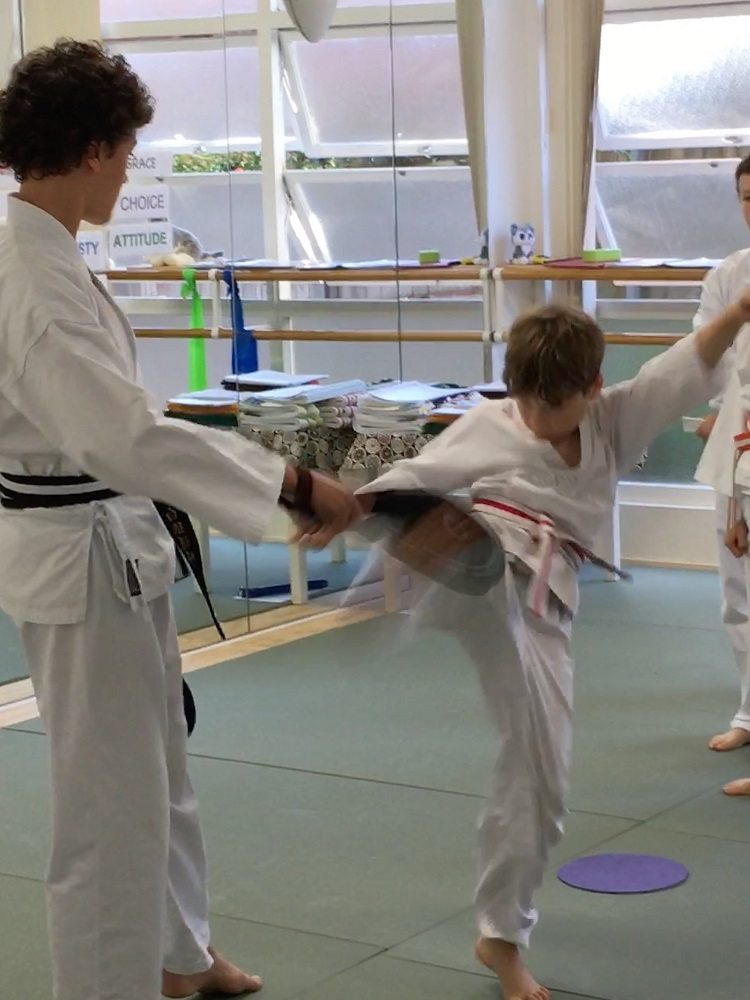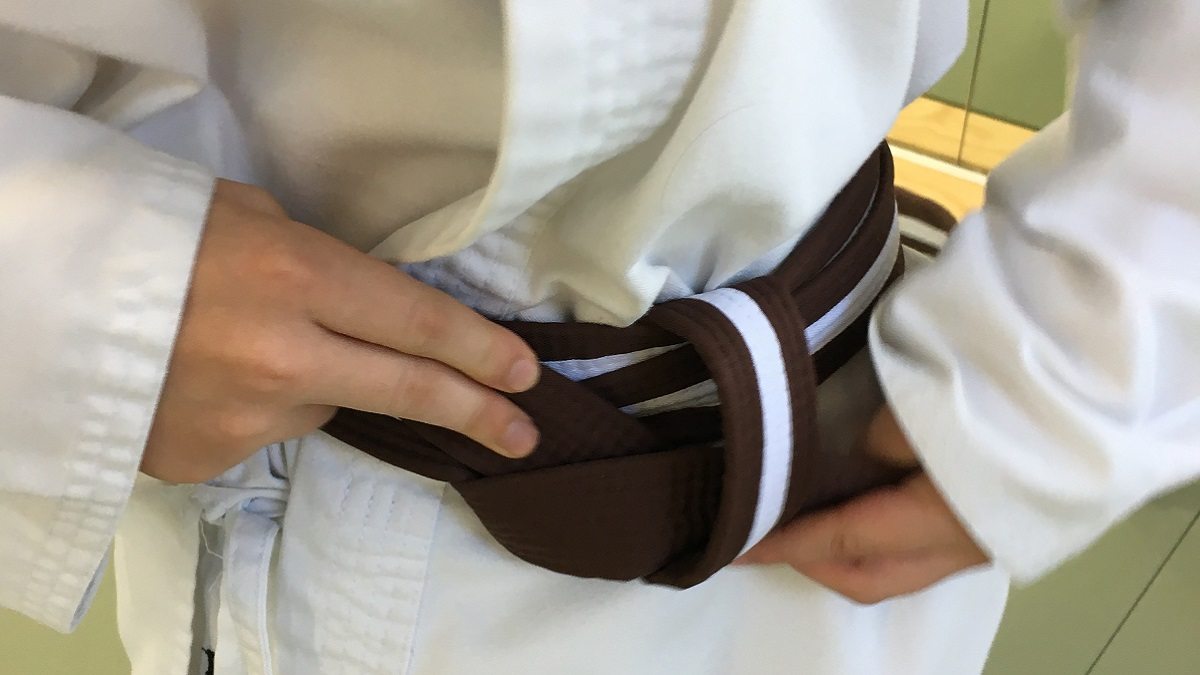
Who here has a kid in a martial arts course of some sort? Anyone considering it? Let me be the first of many to say: totally worth it.
The physical exercise, the mental discipline, the confidence in how their body moves… And don’t forget the power to take over the world!! All of these things I was prepared for. What I wasn’t prepared for was the noise. Because a core component of martial arts is the strength of your kiai; your Hi-YAH! And there is a reason behind this ancient principle. One that could save your life.
What is a KIAI?
Kiai is the Japanese term used for the loud hee-yah or hi-yah you often here in the dojo (or martial arts films). You might also know it as K’ihap in Korean. I’m going to use the Japanese because my kids are studying Bushido and I previously studied Jiu-Jitsu.
Kiai comes from the compound of ki (being energy) and au (being an emphatic marker). Think of it as a combination of the Bene Gesserit Voice from Dune and the power behind Anissa Pierce/Thunder and her breathing. That’s essential what it is: breathing.

Okay, really loud breathing but breathing nevertheless.
Why is a Loud Kiai So Important?
Two of my three kids had their belt-grading on the weekend (the third is not yet old enough and will eagerly tell everyone who even looks like they might ask). Part of the grading is the level of their kiai during their actions. I kid you not.
Sensei is encouraging my kids to yell. And then I spend the rest of the weekend asking them to please stop.
There is, however, a reason behind the kiai. In fact, there are a few reasons.
- Breathing – A loud kiai is a great way to calm your breathing. You do not have to do a kiai after every move; it normally comes at the end of a sequence. During this time you are constantly building up your breathing rhythm. In a serious fight sequence, it can be fairly easy to huff and puff and even hyperventilate. This inconsistency in your breath is only going to tire you out, giving an advantage to your opponent. By using regular kiai, you can even out your breathing and maintain your self-discipline in both physical and mental training.
- Tighten Your Core – This one I didn’t realize until recently. Take a deep breath and forcefully exert a single quick breath with a soft “hi-yah”. Did you feel the muscles in your chest and abdomen tighten? Even just a little? A well-trained kiai can tighten up all of your abdominal muscles and provide extra protection against any attack to your torso. Nifty, right?
- Confidence – Most new students don’t believe this one until after their first lesson. You can always tell because their first kiai is often a small, shy, self-conscious hee-yah. And then Sensei walks over and tells them to be louder, prouder, and more vibrant. And then they give it a second go. And then you see the look of wonder on their face when they realize the loud HI-YAH they gave made them faster and stronger. That’s confidence. It’s beautiful to watch, particularly in the younger students.
- Intimidation – When an eight-year-old boy runs to tackle you and yells an almighty “HAAAAAAA-YEEEEEAHHHH!!!!!!”, your breath will catch for a moment. It is an intimidating sight and can be enough to make an opponent question if this is a good idea. So I’ve heard.
- Focus – This one I know from experience and ties in with the ‘Breathing’ I mentioned above. A well-trained kiai comes at the end of a sequence. It gives you a focal point for your movements, maintaining focus and balance. The best example I have seen of this is during the recent gradings. EG Sinister (11YO) included a board-break with his belt-grading. Part of this test is his focus to follow through with his movement; the key to breaking the board is not to target the board itself but to target past the board. Breathing and using your kiai to focus can help you travel past the board. I have seen many students fail on their first board, only to engage their kiai and forcefully snap right through their second effort!

Does Kiai Work in a Real-Life Scenario?
Absolutely. Most of us have heard about “Fight or Flight”. There is a third option: Freeze.
Imagine a huntsman spider has dropped down from the ceiling (I’m an Australian writer, work with me here). Many of us would think we have two options: fight off the glorious beast, or run as far away as possible. Either option is based on the hope of removing the threat.
Then there is the poor unfortunate soul who takes the lesser known third option: They freeze. They seriously cannot move. This is the option your body automatically considers when you think there is no hope. Unfortunately, the ‘freeze’ option is highly common amongst sexual attacks. A recent study found some humans exposed to extreme threat may react with a state of involuntary, temporary motor inhibition known as tonic immobility. Remember: This is a totally involuntary response and can have longer detrimental effects on the victim, through PTSD and feelings of guilt for not “doing more”. Often you can’t do more; Your body has FROZEN. But with research finally proving this as the third natural response, now we can start looking at training methods to break this response.
Almost every self-defense course will tell you a scream can save your life. It is less about gaining attention and more about using your scream to break through any ‘freeze-response’ you may experience. I am yet to find any comprehensive studies in this area but after speaking to women across three separate defense classes, they all said it had worked for them.
So the next time you are sitting in a kid’s martial arts class, listening to the kiai resonate around the dojo, take a moment to appreciate this extraordinary skill instilled in their training. Listen to all the training benefits from the kiai and watch your ninja grow. But most of all, understand how important this is in their life-lessons.
That loud kiai could one day save their life.





So true! And well explained. I used to play a lot of Kendo, and if you don’t use kiai to scream the point you are aiming for like “HEAD!” when striking your opponent on the head, the strike doesn’t count in a competition. That training has definitely helped me be more confident to stand up for myself, even if I don’t actually go as far as screaming in someone’s face, just taking a deep breath as if I’m about to, helps a lot.
I often feel sorry for tennis players when commentators or other people complain about their yelling and grunting, when obviously they are just using kiai to put more force into their swings. I’m sure their tennis would suffer if they tried to stop. Should I even mention the guys at the Cross Fit gym across the road? I’ve been told you should always breath out when lifting heavy things, and putting a bit of kiai behind it helps you remember.
Funnily enough, I was talking to a friend who is taking tennis lessons and she was told to grunt for two reasons: breathing, and to hide the sound of the tennis ball hitting the racket. Coach theorised that some advance players can judge your technique from sound because it can take some players a second or two to SEE the ball. I have NO idea how true this is but I am convinced about the breathing at least.
PS> yay for confidence and control. I do the same. Kids have told me they are more concerned when I pause for a Breath than when I just drone on in a lecture. 😛
Quite interesting post. I didn’t know anything about this sport before, but it can be really promising! As I know Brazilian Jiu Jitsu is much more popular in US. It is good for any age, size, gender, height, and skill-level. All you will need is special equipment like best headgear for bjj and bjj gi to start training.